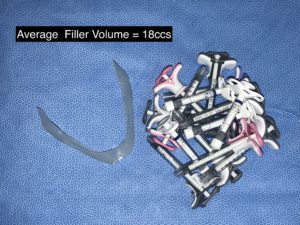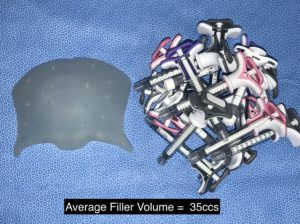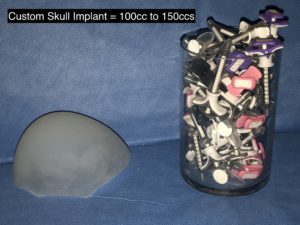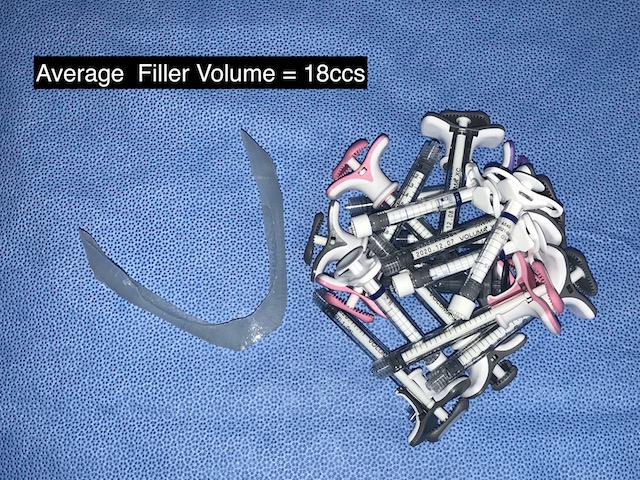In the area of facial augmentation three fundamental treatment approaches exist, injectable fillers, fat injections and implants. Each has their specific advantages and disadvantages but they are not necessarily interchangeable. Each treatment approach differs in aesthetic outcomes, cost, permanency and how they are applied.
While some surgeons view these three facial augmentation approaches as a progressive ladder, they are more accurately viewed as a circle. Patients may enter and leave the circle at different points for different reasons. For example some patients may refer to test areas of facial augmentation by injectable fillers and then proceed to implants should they desire a more permanent effect. Conversely other patients may want to jump right to implants as they do not feel the need to do a test and are already convinced of the result they desire.
One interesting way to look at injections vs implants is by volumetric comparisons. Even though the aesthetic effects are not exactly the same due to difference in their G prime force (how much what is implanted pushes on the overlying tissues…implants have a much higher displacing force due to their stiffness than fillers or fat), it is one method of comparing the any injectable material to an implant.
Due to 3D CT imaging and computer software the volume of every facial implant designed can be precisely determined. Such implant volumes have long been established for all standard facial implant styes and sizes. Custom skull and facial implants, which are almost always much larger than standard ones, have higher volumes. They would not necessarily be the type of implant one may want to consider synthetic injectable fillers to match their volumes. Fat injections would be more appropriate by volume.



When considering the effects of injectable fillers/fat and implants, how they compare by volume is one important consideration. If if one assumes their aesthetic outcomes are the same and presuming one could except either approach, volume comparisons allow for cost-benefit ratio to be calculated.
Dr. Barry Eppley
Indianapolis, Indiana



